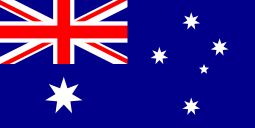 |
| (NASA Image: The Southern Cross Constellation) |
Stargazers in the Southern Hemisphere behold a different night sky than people in the Northern Hemisphere. As Europeans explored below the equator, they discovered new worlds and new people. Accurate, detailed navigation tools, such as star charts, were key survival tools. The Southern Cross Constellation (Crux), only visible in the Southern Hemisphere, quickly gained importance both as a navigational beckon and a symbol of divine blessing. Delving into foreign lands must have been thrilling and terrifying all at once. For Christian Europeans, a constellation in the shape of the cross could easily be interpreted as God overseeing and sanctioning the explorers' actions. The Southern Cross served not only navigational and spiritual significance, but the image was also an acknowledgement that Europeans had opened the doors to a once untouchable world. As Europeans established colonies in this new hemisphere, many flags were created bearing the constellation. Today, the flags of five different nations are still emblazoned with the Southern Cross: Australia, Brazil, New Zealand, Papua New Guinea, and Samoa.
Old and New Legacy
One interesting detail concerns the fact that in their post-colonial eras, these five nations modified or created new flags and each of the nations that already had the Southern Cross on their flag chose to keep it. Why show independence by changing a part of one's flag, but at the same time keep other aspects? Maybe the answer is Southern pride. Europe is in the Northern Hemisphere. Sure, European nations conquered and controlled these areas for many years, but their administration under the Southern sky was short-lived in the grand scheme of things. Therefore, the constellation can serve as a reminder that this is truly a non-European area. For others with less nationalistic sentiment, the Southern Cross can actually serve as a memento of the relationship this hemisphere had (and continues to have) with its European contemporaries. New Zealand actually held a flag referendum in March 2016 on whether or not to adopt a new flag. The proposed flag still contained Crux.
Uniqueness
Constellations are rigid - unchanging. Yet each of the five Southern Cross nations have found a way to put their own unique spin on the constellation and their national banners.
New Zealand's Missing Star
 |
| (Australia's Flag) |
 |
| (New Zealand's Flag) |
By far, these are the two most similar Southern Cross flags, but notice the differences. New Zealand's flag only has four stars in the constellation; compared to five for Australia. (The large star below the Union Jack in Australia's flag represents the unity of the nation and is not related to the constellation). In fact, New Zealand is the only one of the five Southern Cross nations to not include the fifth star - Epsilon Crucis. The reason likely stems from New Zealand's first flag, the United Tribes Flag, which replaced parts of the Union Jack with the four brightest stars of the Southern Cross.
 |
| (United Tribes Flag) |
This concludes Part 1.
Next time we will look at the four other Southern Cross flags and try to learn how and why each are unique.
Thanks for reading!
Want more information? Check out the video New Zealand's government created encouraging citizens to vote on the flag design.

No comments:
Post a Comment